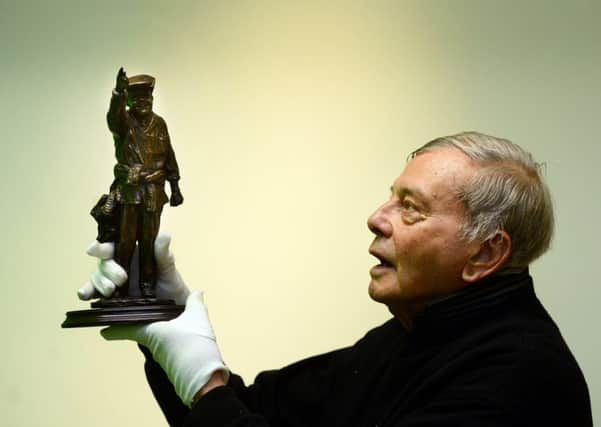Jayne Dowle: Celebrate town, but don't revert to stereotypes


That’s the thing about the world-famous cricket umpire, raconteur, after-dinner speaker and tea-time favourite of none other than Her Majesty, the Queen. He is world-class, not just at the rules of cricket, but at dealing with people at every level in society.
No doubt it was this quality which propelled the miner’s son from Staincross into the public’s affections. This lifetime of achievement has prompted our award-winning town centre museum, Experience Barnsley, to hold an exhibition in his honour, chronicling his life and showcasing the memorabilia 83-year-old Bird has collected over the nigh-on seven decades he has been involved with professional cricket.
Advertisement
Hide AdAdvertisement
Hide AdIt’s an excellent choice for a retrospective. I’m pleased that the museum is focusing on the people who make Barnsley proud. We need all the local heroes we can get, especially ones who can inspire our young people and help them find the self-confidence and aspiration they lack themselves.
There’s a tale – one of the many that Dickie can tell, no doubt – about three young lads sitting on a cricket field having a chat one day. These three young lads just happened to be Harold Dennis “Dickie” Bird OBE, Geoffrey Boycott OBE and Sir Michael Parkinson CBE.
Three young lads from Barnsley, although technically Boycott was born in Fitzwilliam, near Pontefract, who went on to achieve the very highest-accolades in their chosen field; the first two in cricket, of course, and young Michael as an internationally-renowned interviewer and chatshow host.
I’d like to think that there are three young lads sitting on a field in Barnsley today who will go on to achieve the highest they can in their chosen professions. Sad to say, I find this hard to imagine.
Advertisement
Hide AdAdvertisement
Hide AdAnd this is the real point about this exhibition. Our town, like so many others in post-industrial Yorkshire, is not what it was. Although Dickie Bird is a great supporter of young people, including work through his various charity endeavours, the world he grew up in is very different to the one that my own teenage son inhabits.
Although times were tough when Dickie was a lad, anything was still possible. Today, there are so many obstacles to progress. I would hate for this exhibition to be seen as nothing more than an exercise in nostalgia. It should serve as a timely reminder that what was possible then is not possible now.
Today’s world is a much harsher place. Boys who play cricket and like books, as Bird, Boycott and their friend Parky did, are more likely to be bullied than hero-worshipped.
And there are challenging external forces at play. These days the fields of both cricket and the media are dominated by the offspring of prosperous families, more often than not privately-educated, with the financial means to compete at the very highest level. There is so much prejudice out there against young people from more modest backgrounds; that’s just one of the reasons why our sons and daughters lack the confidence to even try.
Advertisement
Hide AdAdvertisement
Hide AdIt is due in part too to the image problem Barnsley still suffers from nationally. It’s all very well putting Dickie Bird on a pedestal. However, we must also remember there is more to Barnsley than old men famous for cricket.
I am no position to take away from him the glory of an exhibition in the museum of his home town. However, at the same time, it does ram home the stereotype that others like to cast upon us. Call it a chip on my own shoulder if you like, but I want Barnsley to be recognised for the town that it is, rather than being seared on the national consciousness as a place populated by chaps in flat caps with their finger in the air.
I’d like people to know about the dancers and musicians and artists and leading academics, writers and scientists this town is producing. I’d like them to know about our glorious countryside and friendly welcome. In short, I’d like the rest of the UK to realise that we’re not a place stuck on a loop playing backwards.
I respect our history, but I always try to look forward. Even the hyper-positive recent BBC2 show Our Dancing Town insisted on identifying us chiefly in terms of our mining history. The last pit round here closed almost 30 years ago, yet all the cliches came tumbling out, rammed home by a recalcitrant group of ardent NUM men who carried on as if they were still negotiating with the bosses.
Advertisement
Hide AdAdvertisement
Hide AdEnjoy Dickie’s exhibition by all means. However, remember that we should be known for what we’re doing now; regenerating the town centre to bring in new shops and businesses, improving our schools and colleges, creating jobs, and generally attempting to show that whilst we respect our elders, they don’t define us.